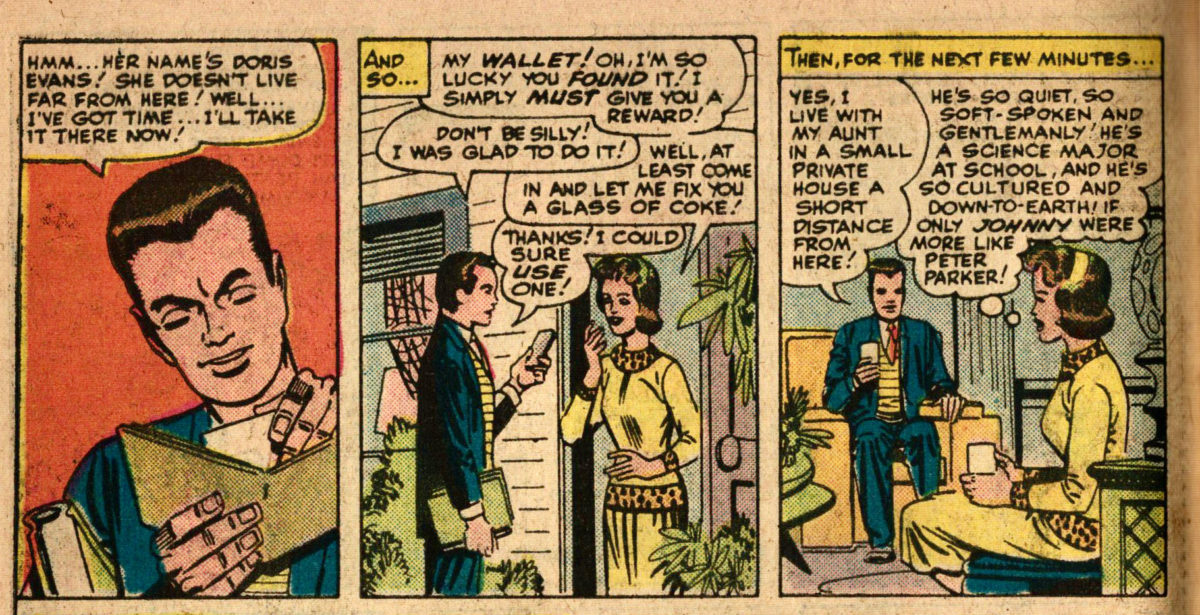Featuring: Spider-Man
Release: July 9, 1964
Cover: October 1964
12 cents
Ruggedly written by: Stan Lee
Robustly drawn by: Steve Ditko
Recently lettered by: S. Rosen
22 pages
| Previous | #258 | Next |
|---|---|---|
| Sgt. Fury #11 | Reading order | Amazing Spider-Man #18 |
| Amazing Spider-Man #16 | Amazing Spider-Man | Amazing Spider-Man #18 |
The Green Goblin returns. I was not impressed with this villain in his first appearance. I am not that impressed with him 60 years later. But he is perhaps Spider-Man’s most popular villain, considered by many to be the definitive Spider-Man villain. Why?
I have a theory, a cynical one, mind you. Perhaps Team Goblin folks can correct me. My theory is this: Green Goblin is the villain in all the best Spider-Man stories, most of which would work just as well if you substituted in any villain. Case in point: this story.

A classmate of Peter’s refers to the James Bond novels. The character had already made his way into at least two films by this point as well. We’ll look back to the current place in pop culture of James Bond when SHIELD gets introduced, to see if we detect any influence.
This remains the only series to really handle the out-of-costume soap opera well. Almost every other title needs to keep its focus on the mission or the villain. Here, the villain shows up for the fight on page 13. Stan and Steve are confident they can fill 12 pages with character work, and they can.
Green Goblin has a new glider. Last time, he had a flying broomstick instead. This is definitely cooler, and he notes it’s faster and more maneuverable… but the old one he specifically noted was designed to make fatal error impossible. He neglects to mention if this new glider has been so designed.

The Green Goblin reveals his arsenal: pumpkin, ghost, frog, moon, bat. Of these weapons, the pumpkin will prove surprisingly enduring.
Continue reading “Amazing Spider-Man #17”







































